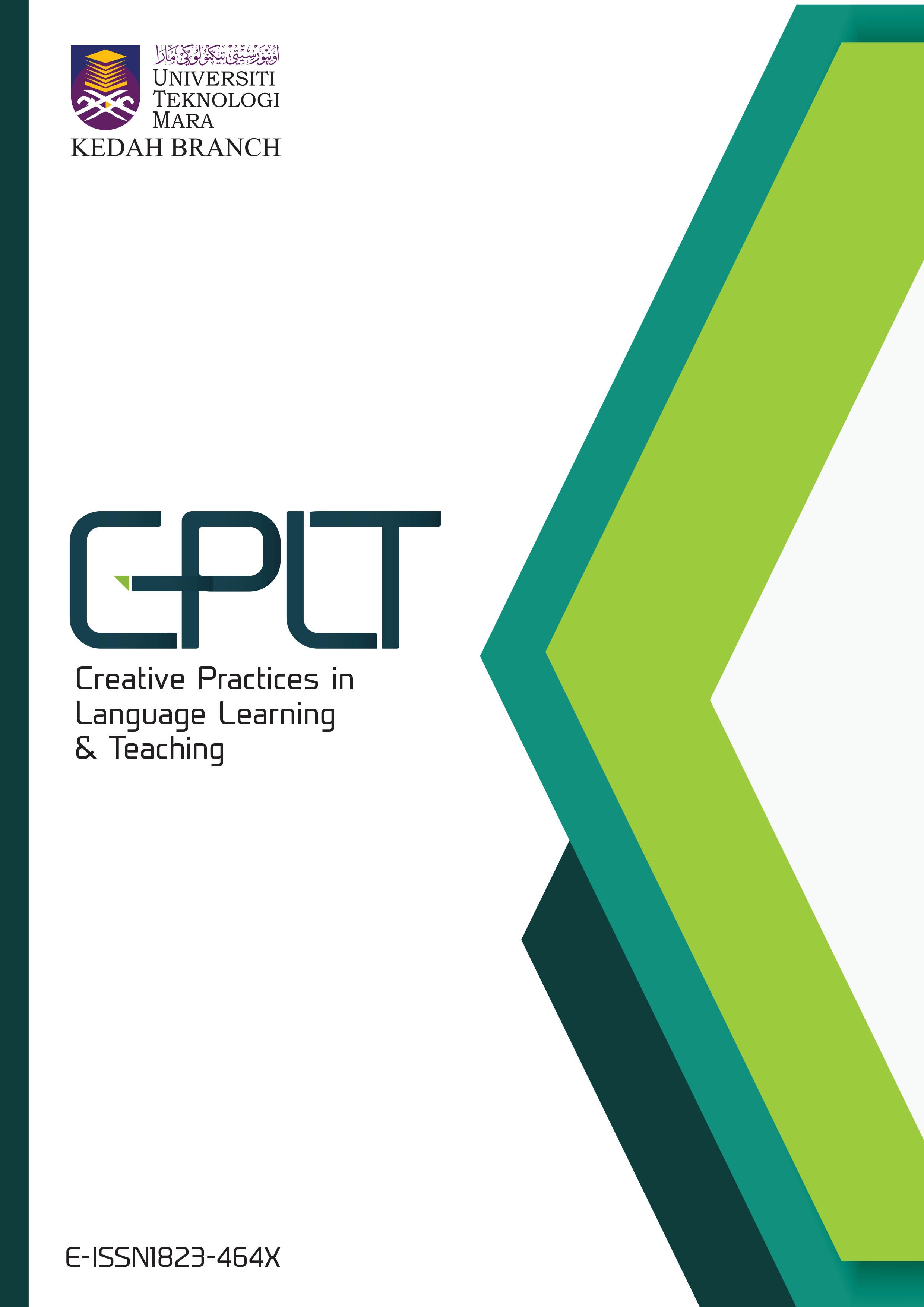Exploring ESL Public Speaking Anxiety Among Undergraduates
DOI:
https://doi.org/10.24191/cplt.v13i1.4234Keywords:
Public Speaking Anxiety, Fear of Negative Evaluation, Communication Apprehension, ESL Learner, Self-Rated AnxietyAbstract
English is a core subject in Malaysian schools and despite receiving at least eleven years of formal education, many Malaysian students struggle with English proficiency due to persistent issues like grammar errors, limited vocabulary, and pronunciation challenges. These difficulties impede their progress to higher education. This study explores public speaking anxiety among undergraduate ESL learners, focusing on three key areas: specific anxiety-inducing situations, overall anxiety levels, and the factors contributing to these anxieties. Data were collected from 65 undergraduate students from Universiti Teknologi MARA, using a mixed-methods approach. Qualitative analysis identified common anxiety-inducing situations, such as fear of making mistakes, negative feedback, and unpreparedness. In addition, the study employed the Public Speaking Classroom Anxiety Scale (PSCAS) to evaluate the students' anxiety levels and identify key contributors to their anxiety. The findings revealed that Fear of Negative Evaluation and Communication Apprehension were significant factors, while Comfort in Speaking English was moderate. Test Anxiety was the least impactful. The study highlights the need for targeted interventions to reduce anxiety and foster confidence in English communication, with suggestions for more supportive learning environments that reduce fear and build students' comfort levels. The findings offer valuable insights for educators and curriculum designers aiming to create more effective strategies to help students overcome their anxiety and improve their public speaking skills.

Published
How to Cite
Issue
Section
License
Copyright (c) 2025 LooiChin Ch'ng

This work is licensed under a Creative Commons Attribution 4.0 International License.







